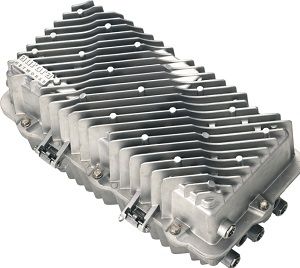Aurora Amps Up The Upstream

Aurora Networks is preparing to launch a new “upgradable” node that will enable North American cable operators to more than double the capacity of their return path when they need that capacity bump.
Set to debut at next week’s SCTE Cable-Tec Expo, Aurora’s new return path gear will run in “standard” mode, supporting a return path of 5 MHz to 42 MHz, and be upgradeable to an expanded range of 85 MHz. Aurora’s upgradable system is comprised of its NC4000 and NC2000 nodes that support a 5MHz-85Mhz return path outfitted with its Universal Digital return platform, the DT4250N. That same combination also supports a downstream spectrum range of 102 MHz to 1002 MHz.
Aurora said this mix will allow operators to buy 5-42 MHz technology today and light up the expanded upstream with “the push of a button” when operators are ready to tack on upstream capacity toward DOCSIS 3.0 as well as DOCSIS 3.1, an emerging CableLabs spec that is targeting downstream capacities of 10 Gbps and an upstream of up to 2 Gbps.
“With new standards quickly approaching, the time is now for operators to seamlessly evolve their networks to support existing and future capacity demands,” John Dahlquist, vice president, marketing for Aurora Networks, said in a statement. “This new solution is a demonstration of Aurora Networks’ dedication to drive innovation for cable operators and provide them with the right solution for their targeted problem serving areas.”
An expansion to 85 MHz is commonly known as a “mid-split,” though few operators have yet to tackle what’s considered to be a significant operational and technical challenge. At last year’s Cable-Tec Expo in Orlando, Massillon Cable general manager and technical operations manager Kelly Rehm surprised showgoers when he revealed that the operator was preparing to for a mid-split upgrade sometime in 2013.
But there’s also a prevailing belief that the spectrum efficiencies supported by DOCSIS 3.1 and its use of orthogonal frequency-division multiplexing (OFDM) will prolong the need to perform a mid- split, or otherwise expand the upstream path.
DOCSIS 3.1 “is a godsend in the upstream,” Comcast executive vice president and chief technology officer Tony Werner said during a panel at The Cable Show in June.
Multichannel Newsletter
The smarter way to stay on top of the multichannel video marketplace. Sign up below.
“I don’t think we’ll have to widen the upstream,” added Mike LaJoie, Time Warner Cable’s executive vice president and chief technology officer, added.
But Aurora’s upgradable approach will give operators the option, just in case.
